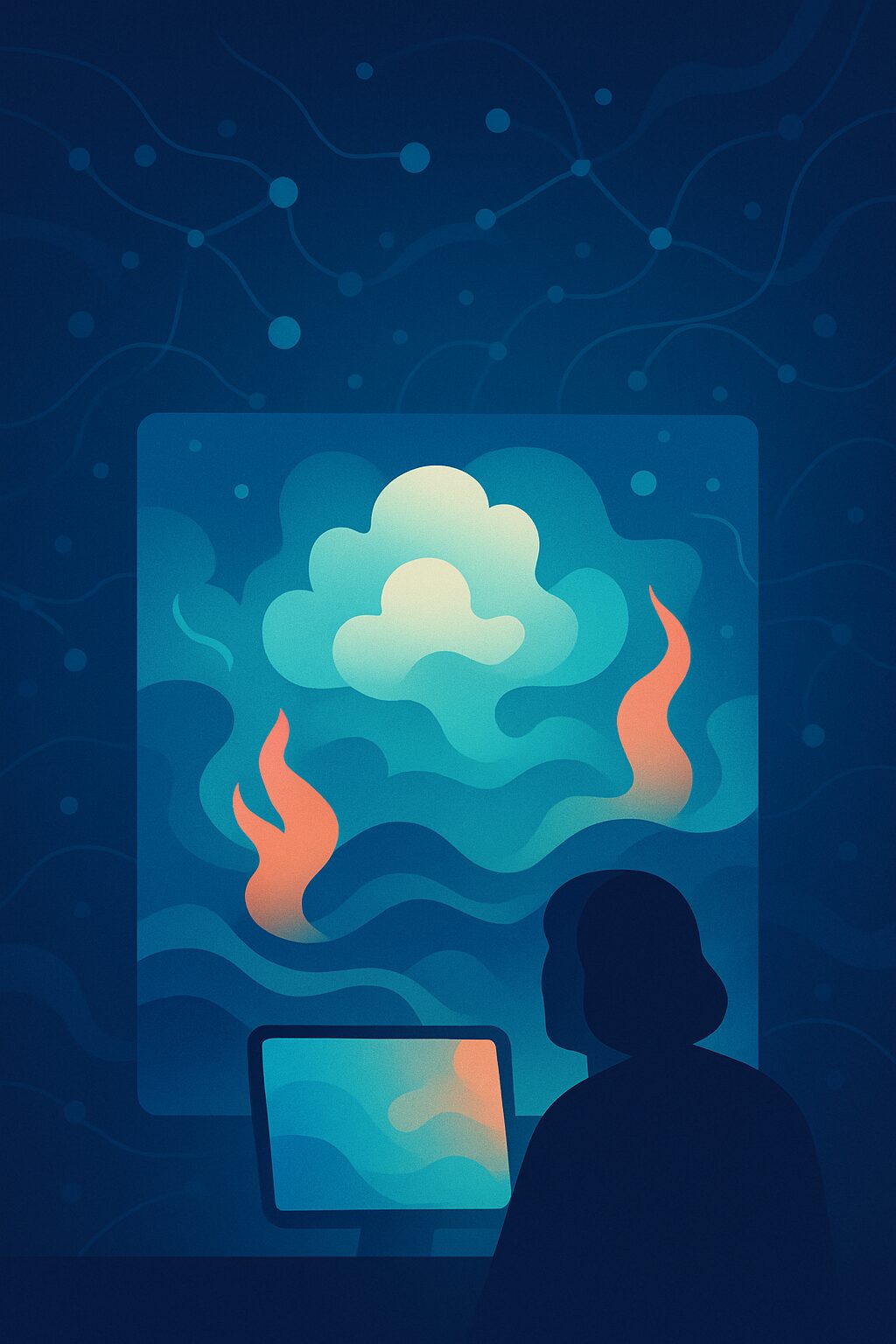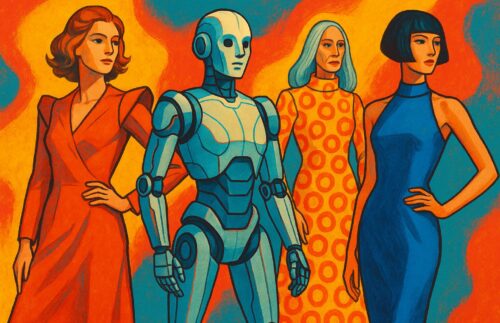When Machines Learn to See: Memo Akten at Ars Electronica
Memo Akten’s “Learning to See: Gloomy Sunday” at Ars Electronica redefines how we think about perception, AI, and emotion. It’s a moving reflection on what happens when machines begin to dream.
When I First Saw It
There are certain moments in art that stay with you, long after you’ve forgotten the exact details.
For me, that moment happened at Ars Electronica in Linz, Austria.
I was wandering through the museum — tired, overstimulated, lost in that strange mental haze that comes after hours of sensory overload — when I came across two screens showing something subtle, alive, and strange.
It was Memo Akten’s work.
I didn’t know that at first. But something about it reached in and rewired me.
No spectacle. No noise. Just quiet motion and thought — light and data breathing in sync.
Learning to See: Gloomy Sunday
The piece I saw was part of Akten’s ongoing series Learning to See.
This particular version, Gloomy Sunday, was featured in Ars Electronica’s Out of the Box exhibition. It’s one of those deceptively simple works that you could almost miss if you walked too fast.
The setup is modest: a camera observes a small table filled with ordinary objects. The live video feed runs through a neural network trained on visual data — things like clouds, oceans, fire, and flowers.
The machine tries to “see” what’s in front of it. But what it shows us isn’t literal — it’s what it thinks it sees, based on what it already knows.
What emerges is hypnotic — shimmering forms, abstract textures, digital dreams of perception.
It’s not about accuracy; it’s about interpretation.
The AI isn’t simply translating reality; it’s inventing one.
Akten’s message is clear:
We all see through filters — even machines, even us
Our perception isn’t objective. It’s deeply colored by memory, bias, and prior experience.
The Moment That Stayed
I remember stopping mid-stride. The motion on those screens wasn’t aggressive, but it felt conscious — as if the code itself was thinking.
For a brief moment, my own reflection appeared in the glass. I realized I was part of the loop: the human watching the machine watching the world.
And then I moved on, but something stayed behind — or maybe it followed me.
That quiet hum of awareness. That whisper that machines, like us, are haunted by the limits of what they know.
Context: Akten and Ars Electronica
Memo Akten is no stranger to Ars Electronica. His collaboration with Quayola, Forms (2011), won the Golden Nica at the Prix Ars Electronica in 2013. That piece abstracted human motion into computational poetry — transforming athletic gestures into rhythm, geometry, and light.
Where Forms explored the body as data, Learning to See dives into the mind as algorithm. It’s a natural evolution — from physical gesture to cognitive pattern, from external motion to internal perception.
The Ars Electronica archive still lists Learning to See: Gloomy Sunday among its featured works. Exhibitions there change constantly, evolving with each year’s technological landscape. But even if this specific piece isn’t on permanent display, its influence remains, echoing through countless artists inspired by Akten’s vision.
Why It Still Matters
What Memo Akten achieves — with such quiet restraint — is rare.
He gives technology a soul without pretending it’s human.
He lets machines mirror our minds, not mimic them.
And he makes us question not what AI sees, but how we ourselves construct reality.
His work is an antidote to tech spectacle — subtle, intimate, and philosophical.
It asks us to look, really look, and realize that what we call “seeing” is an act of constant interpretation.
Even now, years later, I think about that quiet glow at Ars Electronica.
The machine that dreamed in data.
And the strange calm that came over me as I stood before it, caught between knowing and unknowing.
Memo Akten’s art doesn’t just make machines see — it makes us see differently.
And once you’ve seen through that lens, you can never go back.








